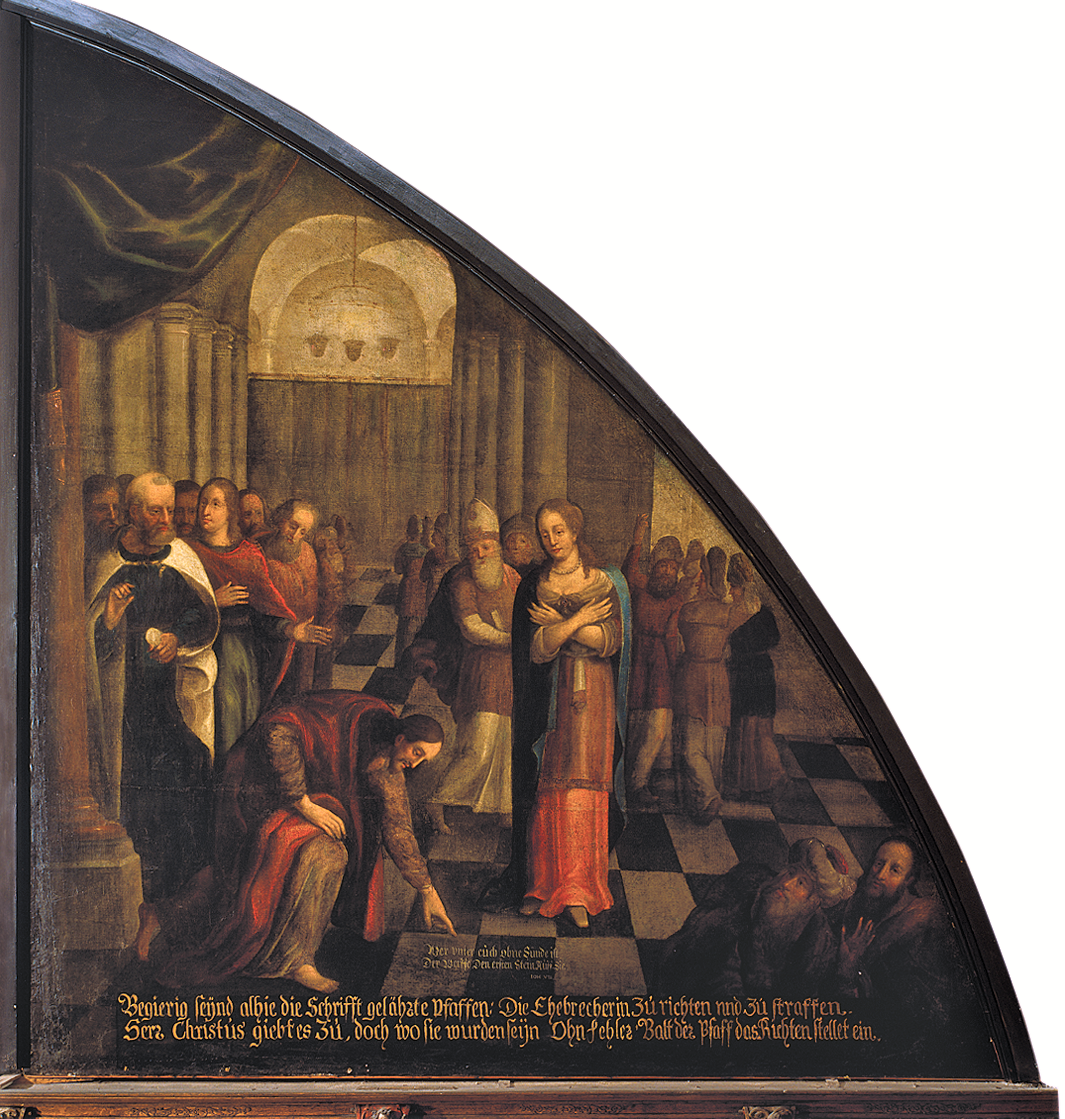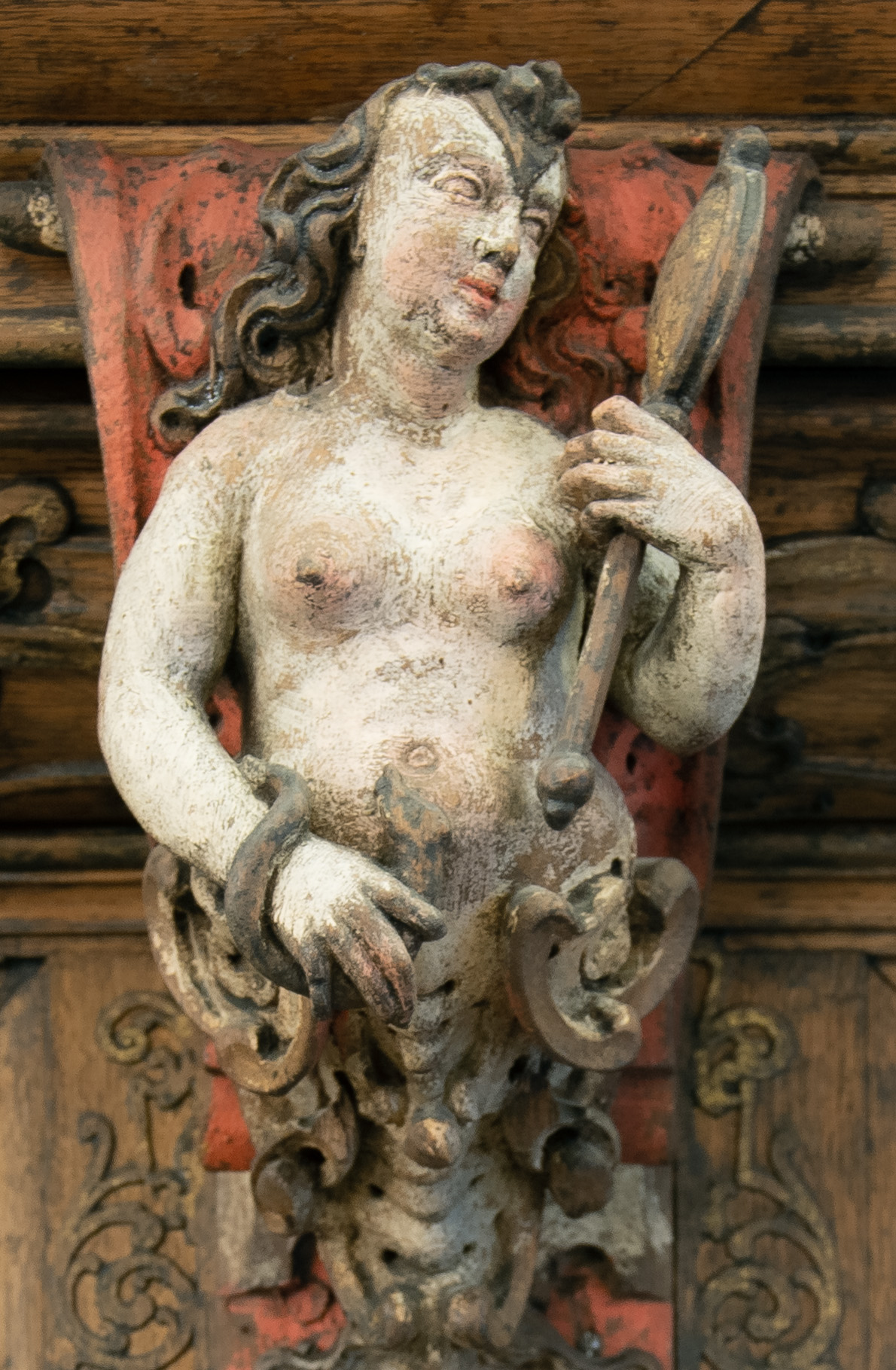7.The Judgement of Daniel. Jesus and the Adulteress. Virtues of Justice and Prudence.
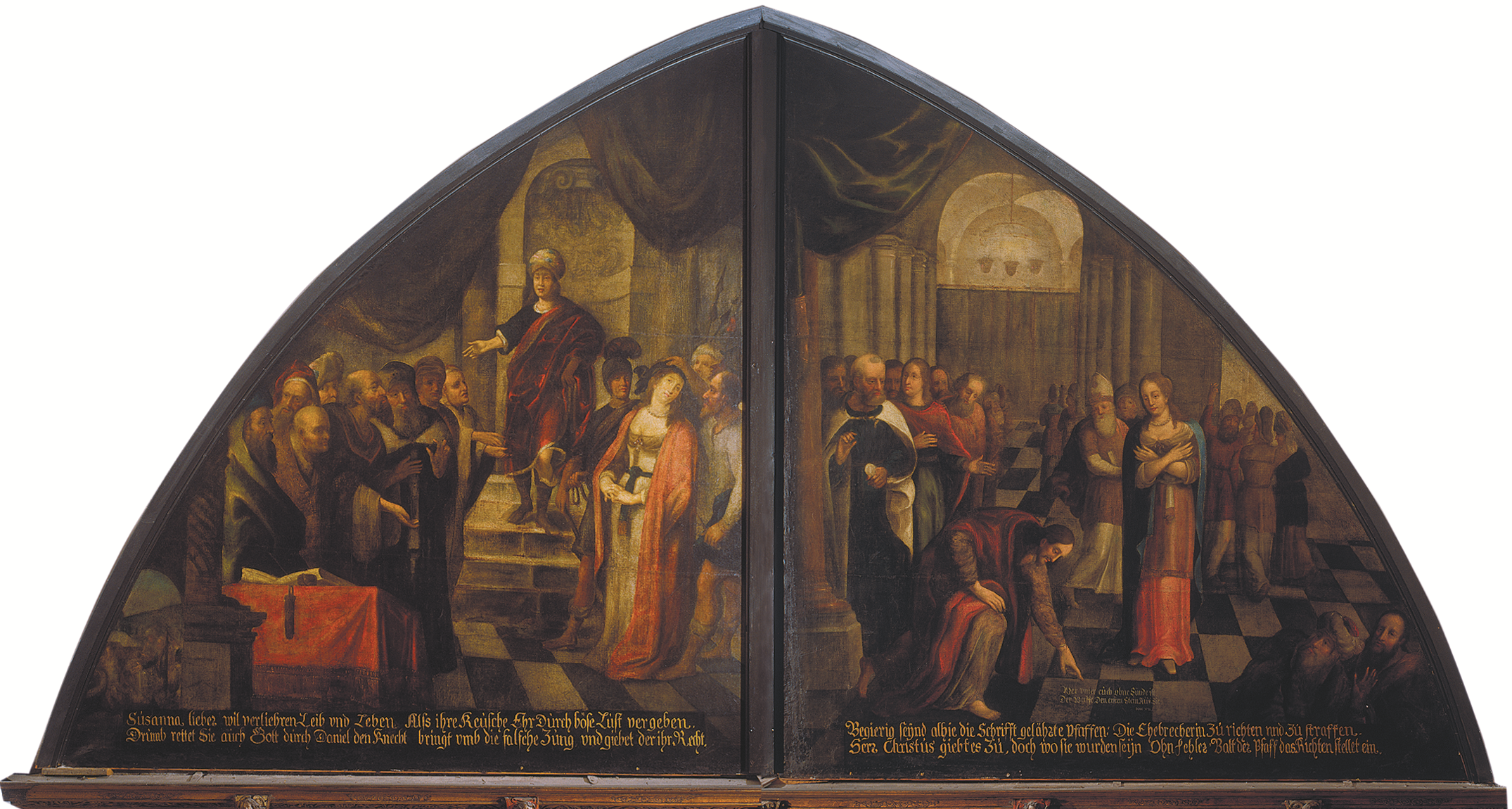 The story of the Judgement of Daniel (on the left) warned the judges against abuse of power and lying.
The story of the Judgement of Daniel (on the left) warned the judges against abuse of power and lying.
Jesus and the Adulteress (on the right) reminded the judges that in order to judge others, they must be virtuous themselves.
The carved virtues of justice (iustitia) and prudence (prudentia) under the paintings formed jurisprudence or iurisprudentia.
7.1The Judgement of Daniel
Two judges saw the beautiful Susanna walking in a garden and started to lust for her. They forced the woman to submit to their desires and threatened to accuse her of adultery should she refuse. Susanna preferred to die rather than commit a sin.
The judges testified in court that they had seen Susanna in the garden with a young man. The woman was sentenced to death for adultery.
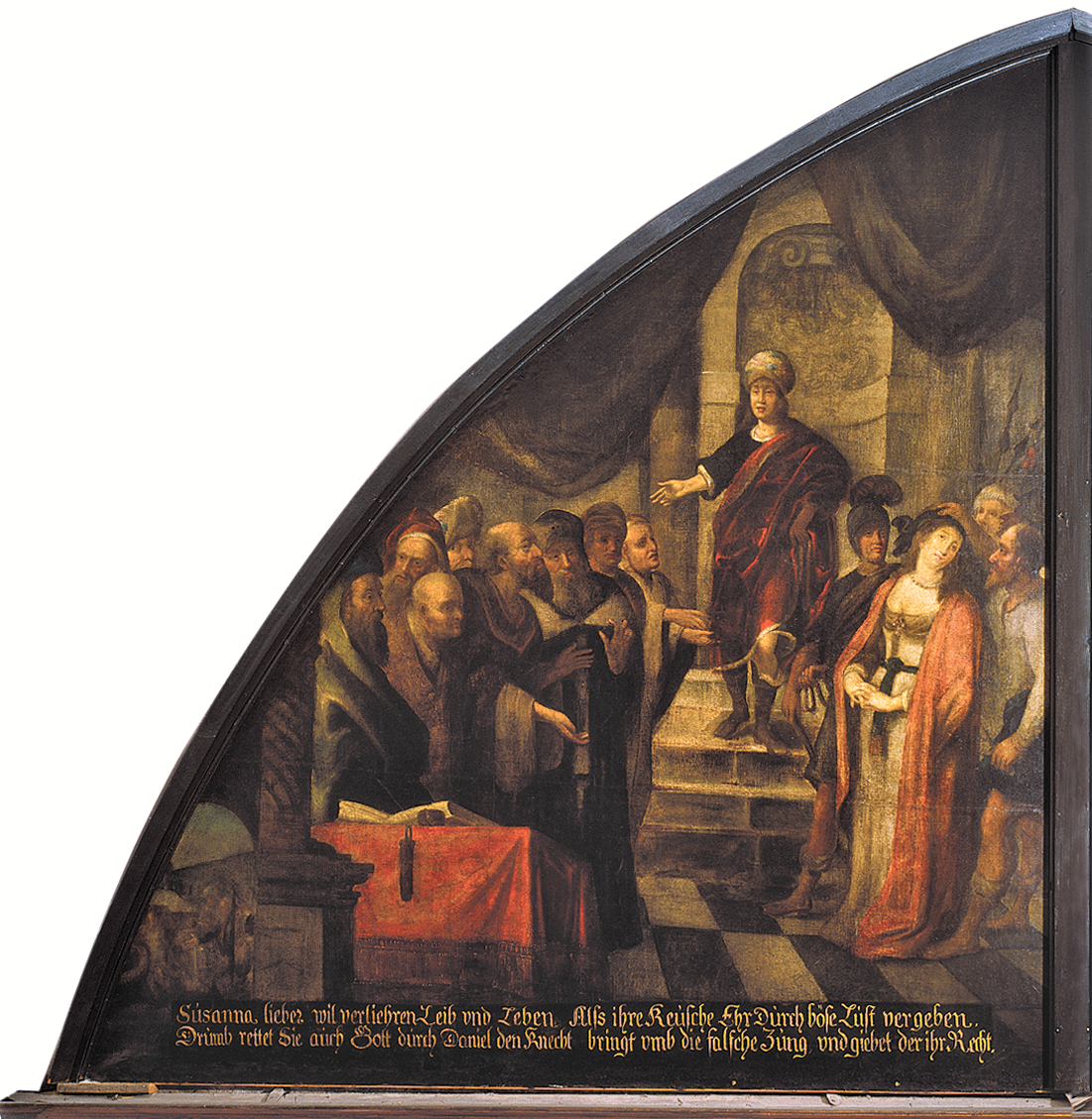 Susanna then prayed to God, who revealed himself in a young man named Daniel. Daniel castigated the people for believing in false testimony and passing judgement without an investigation. He separated the judges from each other and asked each of them under what kind of tree they had seen Susanna lie with the young man. One of the judges responded that it was under an oak tree, the other responded, however, that it was under a mastic tree. And thus Daniel proved that the judges had given false testimony. The perjured judges were executed while Susanna was spared.
Susanna then prayed to God, who revealed himself in a young man named Daniel. Daniel castigated the people for believing in false testimony and passing judgement without an investigation. He separated the judges from each other and asked each of them under what kind of tree they had seen Susanna lie with the young man. One of the judges responded that it was under an oak tree, the other responded, however, that it was under a mastic tree. And thus Daniel proved that the judges had given false testimony. The perjured judges were executed while Susanna was spared.
The moral of the story is that courts must investigate the facts and interview witnesses to ascertain the truth.
7.2Jesus and the Adulteress
The Pharisees brought before Christ a woman caught in adultery. The woman should have been stoned to death by Mosaic Law, but the Romans had forbidden Jews from giving out death sentences.
The Pharisees counted on Jesus violating Roman law should he sentence the woman to death. Should he let the woman go, he would cause offense to Jewish laws.
Jesus, however, bowed down to write and declared: “He that is without sin among you, let him be the first to cast a stone at her.” When Jesus stood up, everyone had left. Then Jesus also abstained from condemning the woman, saying: “Go, and sin no more!”
The painting admonishes the judges to look in the mirror before judging others.
The men depicted in the lower right-hand corner are thought to be Bahde and Corbmacher, treasurers of the Tallinn town council, who are considered to be the purchasers and sponsors of the council chamber’s design.
The paintings were made by Johan Aken (1667).
7.3Virtues of justice and prudence
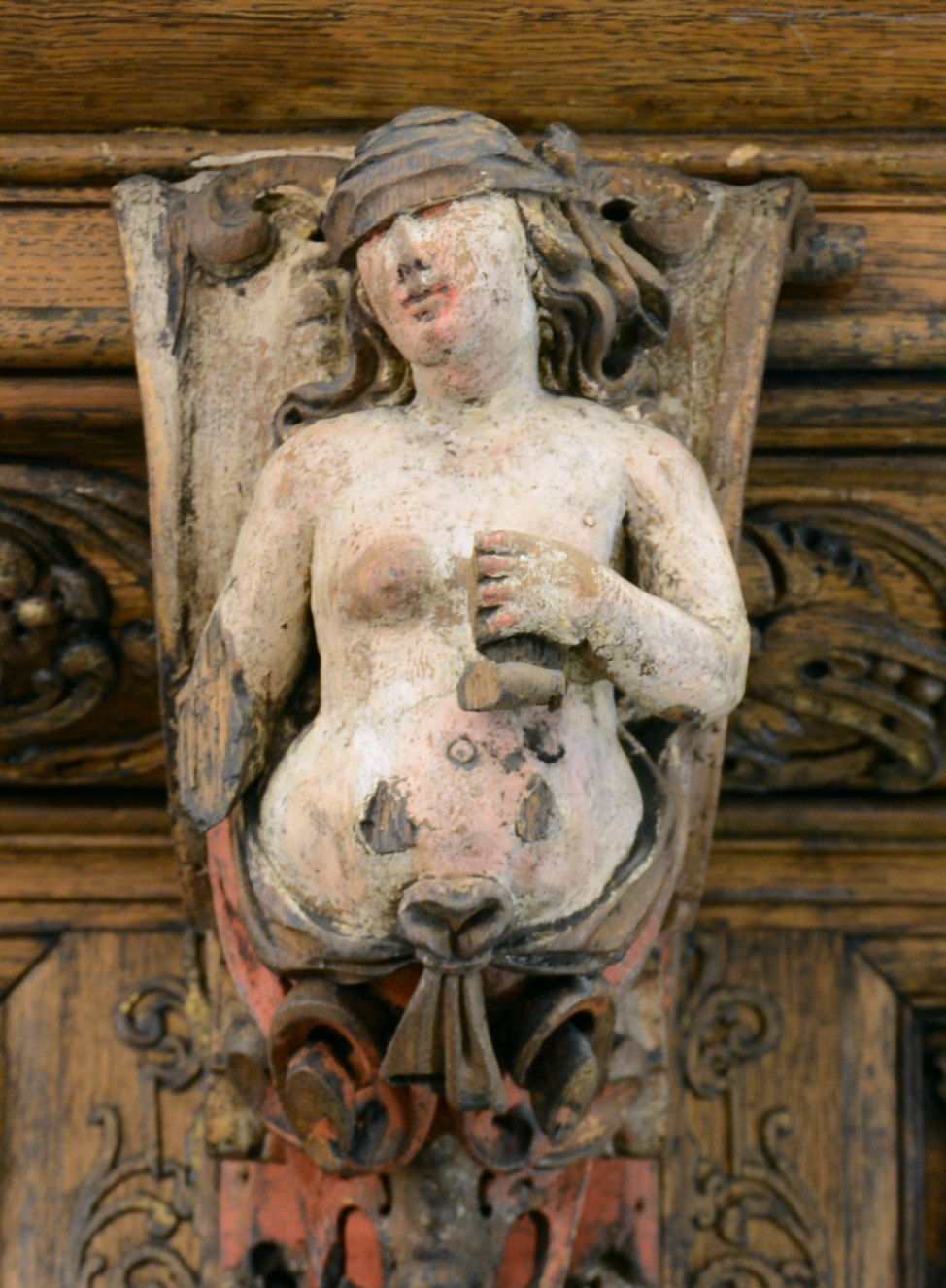 The classic features of Justitia, the virtue of justice, were the scales and the sword, but beginning in the 16th century, she would often be depicted with covered eyes. This emphasised the impartiality and incorruptibility of judges.
The classic features of Justitia, the virtue of justice, were the scales and the sword, but beginning in the 16th century, she would often be depicted with covered eyes. This emphasised the impartiality and incorruptibility of judges.
A carved Justitia under the courtroom paintings can be recognised by the blindfold. Her scales have withered with the passage of time and only the hilt remains of the sword.
Next to Justitia stands Prudentia, the virtue of wisdom, who can be recognised by her mirror and snake. The mirror symbolises her realistic perception of the world and self-reflection, the snake symbolises her shrewdness. Prudentia helps to distinguish between right and wrong.
The virtues necessary for a judge are interspersed with carvings of hunting scenes. The author of the carvings was the distinguished master craftsman Elert Thiele (1674).

